American radio personality Mark Kaye shares ideas on how to use Snapchat for your station or show to engage listeners and receive content.
Snapchat? That weird app that only teens are using? Why should you bother spending time with it? Because you want to be where your (future) audience is. Even though it seems complicated first, you can use Snapchat for radio audience interaction and user-generated radio content. In a session at Lokalrundfunktage 2016, Mark Kaye explained how he does it – and how he’s turning it into revenue.
“When I started, there was only half of the stuff they have now”
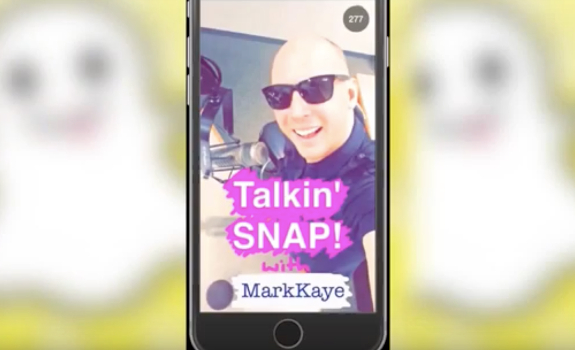
Mark Kaye is focusing on Snapchat functions that serve him as a radio personality (image: YouTube / Mark Kaye)
Keep your content brief
“The first time I downloaded Snapchat, I played with it for five or ten minutes, and I thought: I have no idea what this is! I deleted it, and didn’t think about it again. That was until I read an article about three guys who are making a lot of money on Snapchat, haha.” After reinstalling it and playing around for some time, Kaye figured that this photo & video messaging app actually fits radio better than any other social platform does. “The snaps are a maximum of 10 seconds long, and if you’re in music radio, you know the average intro to talk over is 10 seconds. If you talk any longer, your program director is yelling at you, saying: you’re talking too long; be quiet!”, he jokes. (Even if it’s true for many PPM markets nowadays, where you need to get in and get out as they say.)
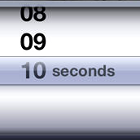 Apply Snapchat’s exciting dynamic
Apply Snapchat’s exciting dynamic
Unless you have an external way to save its content, all incoming photos, videos and messages will disappear from Snapchat within up to 10 seconds after you’ve seen them. That’s similar to broadcasting: “You’ve got this limited window of opportunity to entertain and inform somebody, and that’s what we do! We take short little segments; entertain and inform, and come up with something creative and fun in 10 seconds.”
Launch a Snapchat show
Mark Kaye’s advice is to get over any reluctance when using Snapchat for the first time. “It’s going to be so confusing. When I started, there was only half of the stuff they have now.” First letting you just take pictures and videos, and send them in a message, Snapchat now lets you process images and movies, from drawing and writing to adding visual elements, filter effects and background music. Instead of using the photoshop-alike options (“I really suck at art!”), his focus is how to use Snapchat in a way that fits radio. “I thought: I’m a talk show host; I should just do a talk show, but post it on Snapchat.” He named it Talkin’ Snap!, and started interviewing Snapchat personalities who already had a large following.
“I worked with JBL — which, for a radio guy, is great”
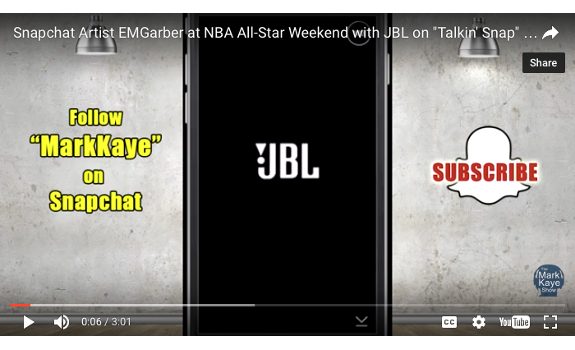
Branded Snapchat content is a potential income stream for stations & personalities (image: YouTube / Mark Kaye)
Showcase your audience’s heroes
His first experiments indicated that it really pays off to interview ‘celebrity’ personalities. “When I featured them on my show, they would tell their audience: check out Mark Kaye’s Snapchat, because I’m on it! It is just like when you’re on the radio. When you interview a celebrity; you hope that they tweet their audience and say: yo, listen up; I’m going to be on 95.1.” He also used the app when doing regular radio interviews with studio guests. “I’d pull them aside and say: hey, I want to interview you for my Snapchat talk show. It was unique enough that people started to grab hold of it.” Soon after, being one of the early adopters of Snapchat for radio got him unto a whole new extension of his media career.
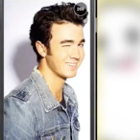 Make money from Snapchat
Make money from Snapchat
After he was featured in Business Insider, people contacted him, saying they wanted to be on the show. Among them was Kevin Jonas, of the former Jonas Brothers, who liked to talk about a new food app he was about to launch. “That was when I realised: hey — just like a radio or TV talk show, this is something that I can get sponsored. I started working with brands and doing some branded content.”
Monetise new income streams
Because of his early experience with using Snapchat, creating content and finding sponsors, Kaye got press coverage, speaking engagements, sponsor opportunities and barter deals. “I worked with JBL — which, for a radio guy, is great, ‘cause they send me free headphones and speakers, haha.” He says he also worked with Unicef and Miller, and recently got commissioned to run Snapchats for the Republican National Convention. In his opinion, Snapchat is the perfect social medium for radio people, as “we understand how to be quick, entertaining and informative – and sell all of that”. Apart from using Snapchat as a revenue source, he finds it to be a great show prep tool for radio.
“We all want to let our audience know: here’s another way for you to watch us”
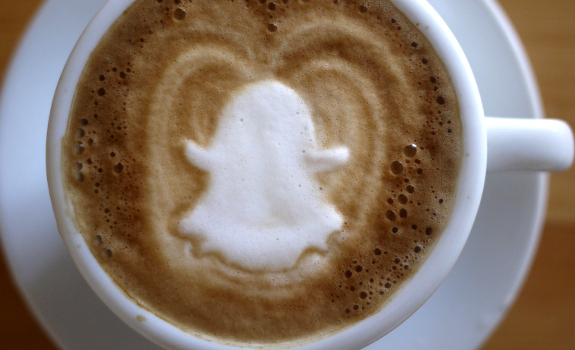
Snapchat is more than a self-promotion platform; it’s also a content generation tool (photo: Flickr / Yuko Honda)
Collect user-generated radio content
Mark Kaye is on the air a lot, from a traditional morning show — “we talk about the Kardashians, we talk about Justin Bieber, we make prank phone calls, and we laugh a lot” — to a political talk show on another station, on Sunday night. The fact that ‘no one’ listens to the radio during that time was a challenge: “I ended up talking to myself every night. Then I realised that I had this huge following on Snapchat.” Up until then, he had been using it only for creating & spreading his own content; not to get content from followers. “I held up the app and said something like: should marihuana be legal in the United States; yes or no? I posted it, waited a couple of hours, and had 50; 60; 100 answers!”
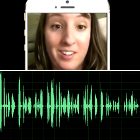 Convert video to audio
Convert video to audio
He would play the video’s audio on air, which he found to be more efficient than having callers on air. Snapchat messages are to the point, as recordings are limited to 10 seconds. “I knew which answers I was going to play, so I could have a perfect response, and I knew exactly where I was going to go. I could then snap all of these people back and say: be sure to listen to the show; I’m going to have you on tonight!”
Benefit from two-way traffic
A few weeks in, he didn’t even use the phone anymore, and was just interacting with his Snapchat audience. He says the station management liked what he did, and as a result, he’s now not only heard in Jacksonville, Florida, but also on a couple of affiliate stations. That exposure gave Kaye a chance to fill in for other radio talk show hosts. He’s now also teaching other stations and their presenters how to use Snapchat for radio. “We all want to let our audience know: we’re funny; we’re exciting; we’ve got this great information; here’s another way for you to watch us. That’s great, and it’s important. But equally important is the ability to use this app to cultivate and create content that we can then rebroadcast on the radio.”
“As soon as I get a snap from somebody, I will at least reply back”
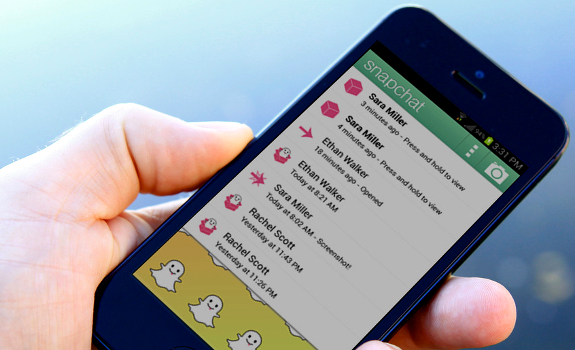
Like on all social media platforms, you want to have a conversation with your Snapchat followers (image: TechBuzz)
Practice clear action calls
In the presidential election year of 2016, there was a news story stating that American women, especially first-time voting young females, were not as supportive of Hillary Clinton than one would assume. Mark Kaye went to his Snapchat account to record a video with a definite call to action: “If you’re a young female voter, let me know: are you voting for Hillary Clinton, and why, or why not”. He then used a compilation of answers in his (conservative) talk show:
[audio:http://www.radioiloveit.com/wp-content/uploads/snapchat-voxpop-mark-kaye-hillary-clinton-01.mp3|titles=Mark Kaye presenting Snapchat voxpops about Hillary Clinton](We have included this audio, which was also played during the session, to illustrate the possibilities of using Snapchat to collect vox pops online – not as an example of how to conduct balanced radio journalism by making impartial editorial choices and ensuring an unbiased on-air presentation. This is obviously an opinionated talk show.)
 Learn from other professionals
Learn from other professionals
Apart from getting useful content, social platforms like Snapchat are great for creating loyal fans. “Anytime you can interact with your audience, it’s going to strengthen that bond, and make it better for both of you.” Relations with other (influential) snap chatters are valuable as well. There are Facebook groups where you can exchange knowledge and experience with other professional Snapchat users.
Thank followers for contributing
As he can’t broadcast every response, how does he manage the expectations of Snapchat users who are submitting content? “I will at least reply back — a ‘thank you’, a thumbs up, or ‘hey, this is great; listen for yourself tonight’. Sometimes I’ll put them on my story [Snapchat timeline] as well.” Kaye not only interacts with his community before & after the show; his backchannel is basically always on. “During the commercial break, I’ll say something like: ‘you’re doing great; keep the responses coming; don’t forget to tune in!’ And I’ll put the website address on Snapchat.”
“I’m really kind of a control freak”
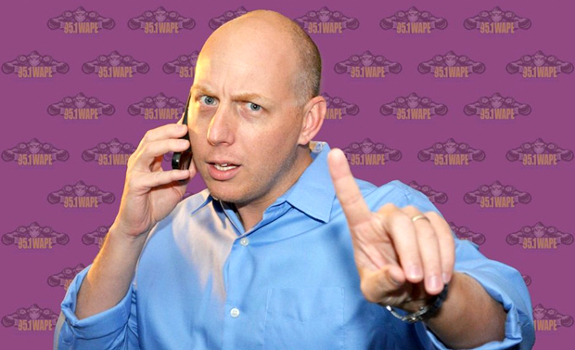
Mark Kaye likes to produce as much content for his radio show by himself as he possibly can (photo: 95.1 WAPE)
Capture Snapchat audio & video
The question for radio stations using Snapchat is: how to save a video (or pull audio from a video) from Snapchat? Mark Kaye likes to connect the phone’s audio output to digital editing software. He’s using Adobe Audition to record and trim audio. For grabbing video, he connects his iPhone to QuickTime on his computer: “Select your iPhone as the camera, and your iPhone as the microphone. Google: recording off your iPhone screen.” Another way is using actual screen recording software, or jailbreaking your iPhone, which lets you download content directly from Snapchat and save it as an editable audio or video file.
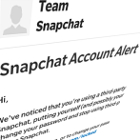 Don’t use external apps
Don’t use external apps
His advice is to always avoid Snapchat apps from third parties (or stop using them as soon as you get a warning email), because otherwise your account may get suspended. “About two years ago, everyone was using third-party apps. There were people using them for bad reasons, so Snapchat laid down the law. I know a lot of people who had their accounts shut down; no questions asked, and they had a lot of followers.”
Produce your content efficiently
While his Snapchat show prep time depends on how much response he gets, a huge time saver is recording and auditioning simultaneously. In record mode, he’ll add a time marker to highlight good parts (with the ‘M’ key in Adobe Audition), thus having to edit only those segments. He then orders all parts into a storyline, like in the Hillary Clinton example: “It started with one that was kind of interesting, and ending with a couple of ‘wow, I cannot believe she’s said that’. It’s all part of formulating.” His 2-hour Snapchat-based show on Sunday takes about 3 hours to pre-produce, which he does by himself. “I’m really kind of a control freak. When it goes out on the air, it’s either something I’ve produced, or something I’ve overseen.”
To try this at home (or at your station), check popular YouTube tutorials on how to use Snapchat.

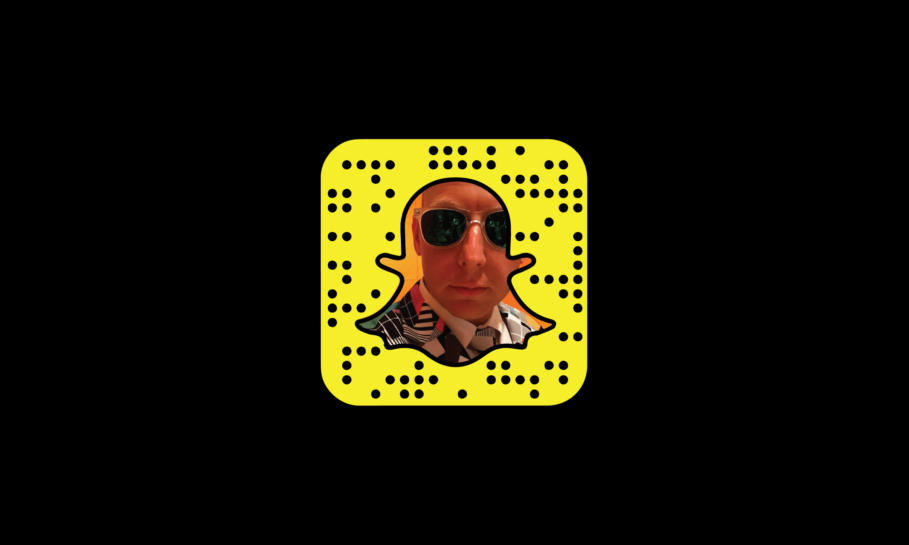




Hi Tonja, thanks for your reply! I think it’s definitely worth giving it a try. Good luck, and let us know how it works out!
Hi, this sounds so interesting. I am just wondering if this would work for me. I am a co-host on a Christian talk radio show with a few other people. I like this concept. I think we could get more people to respond to our talk show by using Snapchat. What do you think?